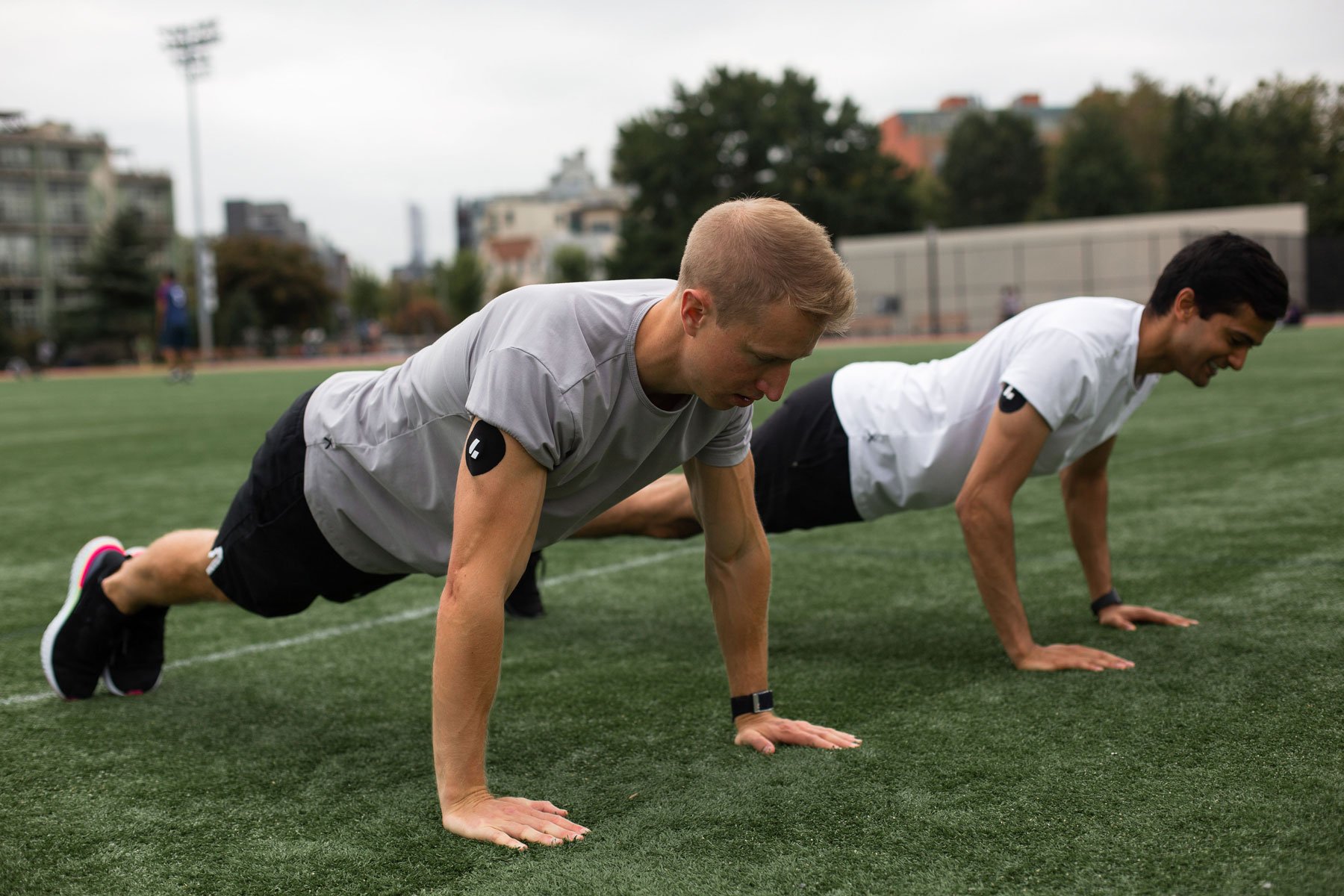Levels core promise has long been “We show you how food affects your health,” and that’s never been more accurate than with the current version of the Levels app. We believe that step one to improving your health is data—seeing the hard numbers around your diet and lifestyle choices and your key biomarkers—and step two is turning that data into action, whether changing your meals, your exercise habits, or your sleep routine.
The latest Levels app offers the most expansive take yet on that mission, with a wealth of information and suggestions even when you’re not measuring your real-time blood sugar with a continuous glucose monitor (CGM). With fast, easy food logging and highly customizable habit and data tracking, Levels is a powerful tool in your health-improvement toolkit, regardless of your journey.
Here are five critical things you can learn from Levels even when you’re not wearing a CGM.
1. Is your diet helping you meet your goals?
 When it comes to diet, macros matter. Understanding the macronutrient content of your food is vital to improving your health, from consuming enough fiber to support your gut to getting sufficient protein for muscle growth to limiting carbs to keep your blood sugar stable. The only way to see that is to log your meals with a tool like Levels that gives you the macro breakdown: protein, fat, carbs, fiber, sugars, added sugar, and calories.
When it comes to diet, macros matter. Understanding the macronutrient content of your food is vital to improving your health, from consuming enough fiber to support your gut to getting sufficient protein for muscle growth to limiting carbs to keep your blood sugar stable. The only way to see that is to log your meals with a tool like Levels that gives you the macro breakdown: protein, fat, carbs, fiber, sugars, added sugar, and calories.
Research shows that most people vastly underestimate how much they eat when they’re not logging, so minding macros on your own is nearly impossible. And many studies suggest successful weight loss is tied to food logging. But tracking is an extra step, easy to forget or avoid. That’s why we’ve worked hard to make meal logging quick and painless.
The Levels app offers several ways to log, including search and barcode scanning, but the two quickest methods are our AI-powered options: AI Describe and Photo Detect. With AI Describe, simply write or say what you ate in natural language: “omelet with peppers and ham,” and AI will log the individual ingredients with macros. With Photo Detect, just snap a picture, and the app will analyze it in the background; pop back in later to review and edit if necessary. Both options are available from a widget, so it takes less than 10 seconds.
2. Are your meals actually healthy?
Macro tracking is one vital step, and Habit Loops [below] can show how well you’re hitting your macro targets.
But meal quality is about more than macros, which is why we have the Zone Score: a 1-10 grade on every meal and the actions you take in the two hours after the meal, like walking to help blunt your blood sugar response.
 The Zone Score comprises several components: the macro makeup of the meal (rewarding high protein and fiber, penalizing high carbs or unhealthy fats), the quality of the food (whether it’s processed or whole, if it contains harmful ingredients like seed oils or trans fats), and the actual or likely blood sugar impact.
The Zone Score comprises several components: the macro makeup of the meal (rewarding high protein and fiber, penalizing high carbs or unhealthy fats), the quality of the food (whether it’s processed or whole, if it contains harmful ingredients like seed oils or trans fats), and the actual or likely blood sugar impact.
If you’re wearing a CGM, the score will account for your body’s glucose response—the shape and rate of your post-meal rise. But when you’re not wearing a CGM, we utilize our more than 10 million glucose logs from our members to show you the average community glucose response for a similar meal.
Combining all these factors into a single number, the Zone Score offers a simple metric for meal quality. It makes it easy to compare meals without pouring over all the individual numbers. Because you can always search previous zones, building a library of the meals that work best for you is easy.
3. Are you doing the right things consistently?

Improving health is simply a matter of stringing together practices that are good for you, from exercise to diet to sleep and stress management. These essential habits create a flywheel effect: as you improve one, it becomes easier to improve others. For instance, getting good sleep reduces carb cravings the next day, making it easier to stick to your nutrition goals. Regular exercise helps you maintain a healthy weight, which can improve your sleep.
However, managing all those habits can be a pain if you have to jump from your meal tracker to your sleep app to your workout app. Levels combines all your relevant data into one place and uses it to generate insights that help you do better.
First, there’s Habit Loops, a customizable version of a familiar visual device for tracking three essential habits at a glance. You can use Habit Loops on macros, glucose dynamics, exercise, sleep, hydration, and stress. As you move toward your goal each day, you see the loop complete.
For those metrics you’re not tracking in Habit Loops, you can still see daily, weekly, and monthly views, including movement patterns, on your My Data page.
4. What else could you be eating or doing?
While some food logging apps are simply a way to keep track of your meals, Levels constantly surfaces insights based on your data and logs.
For example, when you log a meal, the app will automatically analyze the ingredients and give you more information about them:
- Why that particular ingredient is vital for metabolic health
- Ideas for ingredient swaps that better support health, like trying cauliflower rice instead of white rice
- Recipes that incorporate your favorite foods or can help you hit your goals, like overnight chia pudding instead of oatmeal
Soon, the app will show more sophisticated insights based on holistically looking at all your data. For example, “In the past month, there were 11 days where you logged ≥200 calories in the 2 hours before bedtime. Try to avoid this as much as you can, and your sleep quality will likely improve.” or “We’ve noticed some inconsistency with your sleep over the past 2 weeks. Most people do well getting a consistent 7.5 – 8.5 hours of sleep per night. Would you like to configure a sleep habit?”
Insights like these turn the data into usable information you can build on, so you’re not just tracking for tracking’s sake.
In addition to insights, the Levels Library has nearly 600 articles and videos spanning metabolic health basics, member stories, recipes and product recommendations, and scientific deep dives. All the articles are based on primary research and informed by our expert advisors so you know you can trust them.
5. Are your long-term trends improving?

The hard truth is that none of this matters if you’re not confident that you are, in fact, getting healthier. Part of the reason so many people fail to sustain healthy behavior is that it’s often hard to see the results of their work. Improving health—particularly metabolic health—is a long-term project. It’s not the result of one week of hitting protein or step goals.
While the best way to see your progress is by measuring biomarkers—either with a CGM or by getting Levels Labs—seeing long-term trend data demonstrating that you’re feeding that flywheel can at least give you confidence that your inputs are moving in the right direction.
That’s why Levels makes it easy to see streaks and long-term trends. For example, when you hit the calendar icon, you can see an entire month’s view showing how many days in a row you hit your Habit Loop goals. The My Data page shows data for up to 90 days across all your core metrics, including the curve and distribution, so you can quickly view trends. So you can see movement on metrics demonstrating better health, like glucose stability, weight, or exercise duration. We also show you weekly and monthly reports that summarize your trends.
Conclusion
Levels is both your dashboard and your guide to your health. Logging meals regularly, setting Habit Loops, and periodically checking in on longer-term metrics empowers the app to give you insights and feedback you can use, which in turn empowers you to sustain the behaviors that keep you living your best life.








